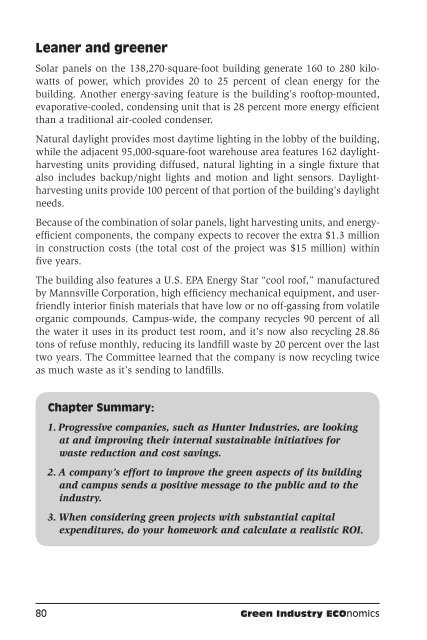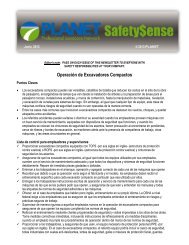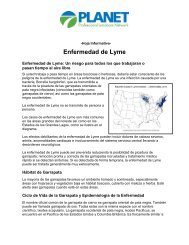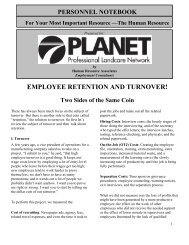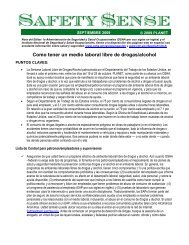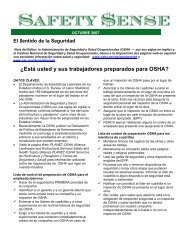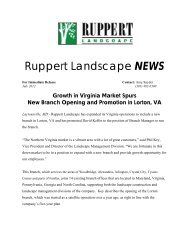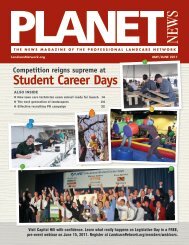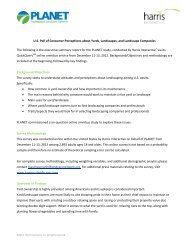Green Industry ECOnomics - LandcareNetwork.org
Green Industry ECOnomics - LandcareNetwork.org
Green Industry ECOnomics - LandcareNetwork.org
You also want an ePaper? Increase the reach of your titles
YUMPU automatically turns print PDFs into web optimized ePapers that Google loves.
Leaner and greener<br />
Solar panels on the 138,270-square-foot building generate 160 to 280 kilowatts<br />
of power, which provides 20 to 25 percent of clean energy for the<br />
building. Another energy-saving feature is the building’s rooftop-mounted,<br />
evaporative-cooled, condensing unit that is 28 percent more energy efficient<br />
than a traditional air-cooled condenser.<br />
Natural daylight provides most daytime lighting in the lobby of the building,<br />
while the adjacent 95,000-square-foot warehouse area features 162 daylightharvesting<br />
units providing diffused, natural lighting in a single fixture that<br />
also includes backup/night lights and motion and light sensors. Daylightharvesting<br />
units provide 100 percent of that portion of the building’s daylight<br />
needs.<br />
Because of the combination of solar panels, light harvesting units, and energyefficient<br />
components, the company expects to recover the extra $1.3 million<br />
in construction costs (the total cost of the project was $15 million) within<br />
five years.<br />
The building also features a U.S. EPA Energy Star “cool roof,” manufactured<br />
by Mannsville Corporation, high efficiency mechanical equipment, and userfriendly<br />
interior finish materials that have low or no off-gassing from volatile<br />
<strong>org</strong>anic compounds. Campus-wide, the company recycles 90 percent of all<br />
the water it uses in its product test room, and it’s now also recycling 28.86<br />
tons of refuse monthly, reducing its landfill waste by 20 percent over the last<br />
two years. The Committee learned that the company is now recycling twice<br />
as much waste as it’s sending to landfills.<br />
Chapter Summary:<br />
1. Progressive companies, such as Hunter Industries, are looking<br />
at and improving their internal sustainable initiatives for<br />
waste reduction and cost savings.<br />
2. A company’s effort to improve the green aspects of its building<br />
and campus sends a positive message to the public and to the<br />
industry.<br />
3. When considering green projects with substantial capital<br />
expenditures, do your homework and calculate a realistic ROI.<br />
80 <strong>Green</strong> <strong>Industry</strong> <strong>ECOnomics</strong>


